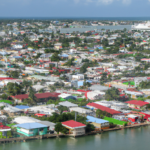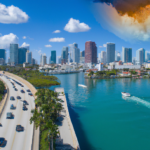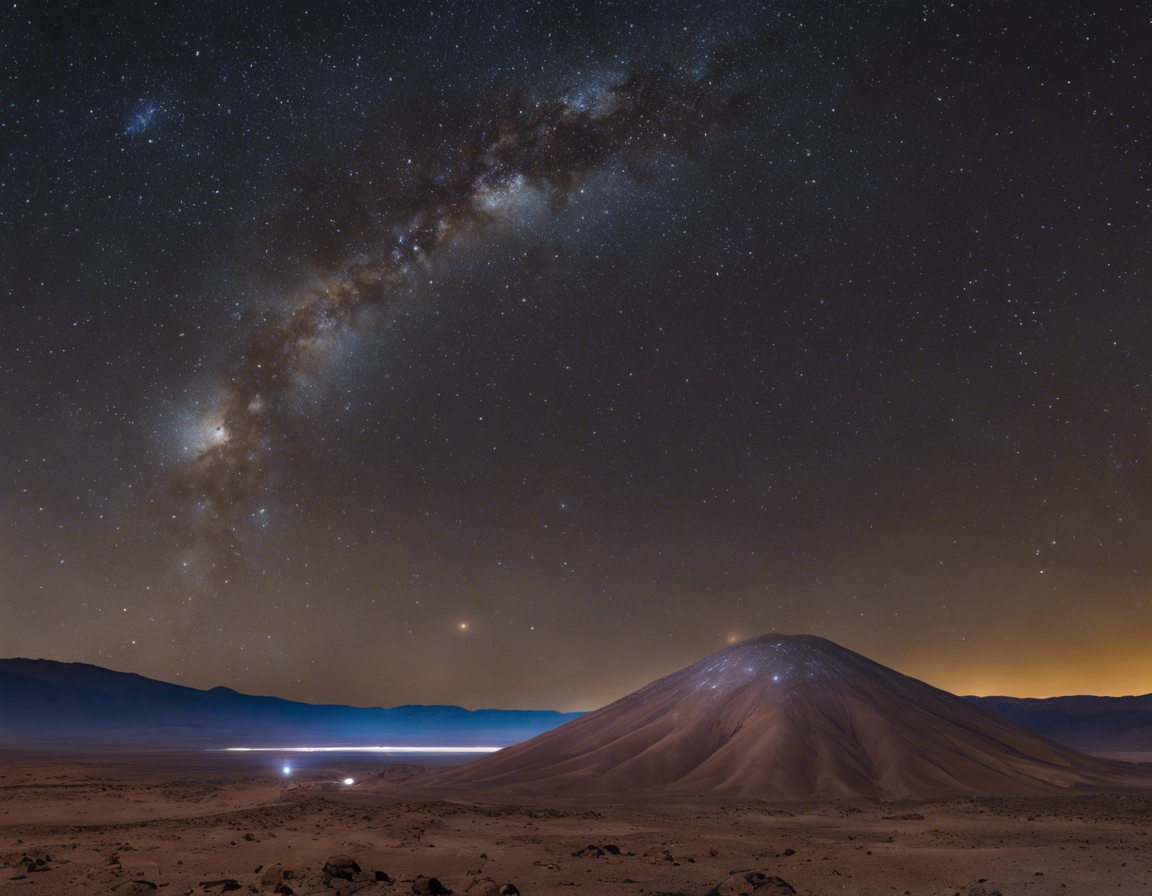
The Atacama Desert Stargazing Capital of the World,
The Atacama Desert, often dubbed the “Stargazing Capital of the World,” offers an unparalleled experience for couples seeking romance under the stars. With its breathtaking landscapes, vibrant nightlife, and rich history, this destination promises an adventure filled with awe and wonder. Here’s a comprehensive guide to making the most of your stargazing experience in the Atacama Desert.
A Brief History of Stargazing in the Atacama Desert:
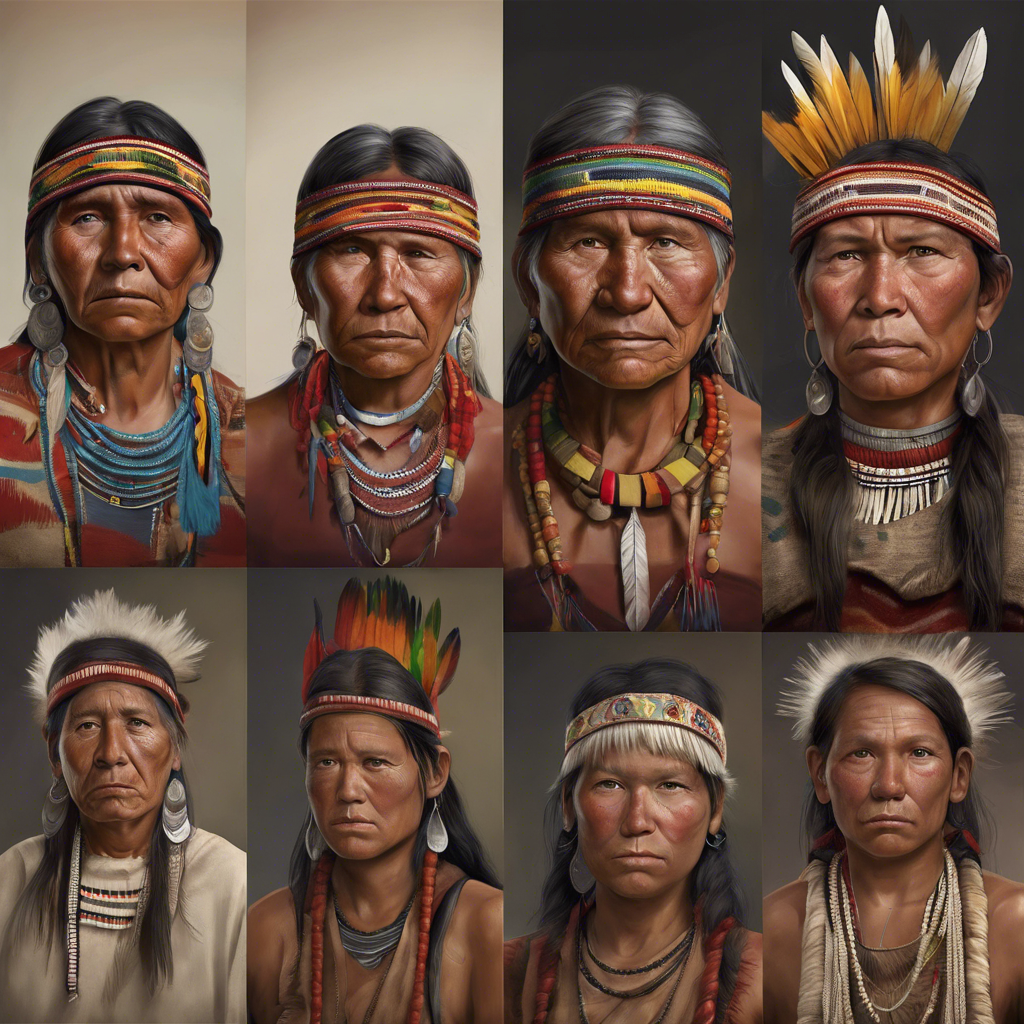
The Atacama Desert, located in northern Chile, is renowned for its unparalleled stargazing opportunities. Its unique geographical and climatic conditions have made it a focal point for both ancient cultures and modern astronomy. This history intertwines indigenous knowledge with contemporary scientific advancements, creating a rich tapestry of celestial exploration.
Ancient Indigenous Astronomy
Long before telescopes and modern science, the indigenous Atacameñan people had a profound understanding of the night sky. They utilized the stars for navigation, agricultural planning, and cultural rituals. The Lickanantai, the primary indigenous group in the region, aligned their villages and structures with celestial bodies, demonstrating their deep connection to astronomy. They recognized “dark constellations,” which are areas of the sky where dust clouds obscure stars, and used these patterns to mark time and seasons.
The ruins of ancient settlements like Tulor, dating back over 2,800 years, provide evidence of this sophisticated understanding. The Atacameñans built their homes to mirror the peaks of the Andes, indicating a close relationship with their environment and the cosmos6. Their astronomical knowledge was not merely practical; it was woven into their cultural identity.
The Rise of Modern Astronomy
The mid-20th century marked a significant shift as Western astronomers began to recognize the Atacama Desert as an ideal location for astronomical research. The region’s high altitude (often exceeding 2,400 meters), minimal rainfall, and low light pollution create perfect conditions for observing celestial phenomena. Early expeditions involved arduous journeys through remote areas to assess potential observatory sites24.
By the 1960s and 1970s, several observatories were established in the Atacama. The Cerro Tololo Inter-American Observatory was one of the first major installations, followed by others like La Silla and Las Campanas. These observatories allowed astronomers to monitor atmospheric conditions and sky brightness meticulously23.
The ALMA Observatory: A New Era
The Atacama Large Millimeter Array (ALMA), inaugurated in 2013, represents a pinnacle in astronomical research. It consists of over 60 radio antennas that work together to observe cosmic phenomena at millimeter wavelengths. This facility has provided astronomers with unprecedented insights into star formation, galaxy evolution, and even the origins of life. ALMA’s location was chosen specifically for its exceptional atmospheric conditions, making it one of the most advanced astronomical projects globally.
Astro-Tourism Boom
In recent years, stargazing in the Atacama has evolved from a niche activity for scientists into a booming sector of astro-tourism. Travelers flock to San Pedro de Atacama not only for its stunning landscapes but also for its clear night skies. Tour operators offer guided stargazing experiences that include telescope use and educational insights into astronomy. Popular spots like SPACE (San Pedro de Atacama Celestial Explorations) provide immersive experiences that blend local culture with celestial observation.
These tours often feature warm drinks and cozy blankets while participants gaze at planets like Saturn and Jupiter or explore stellar clusters through powerful telescopes. The combination of breathtaking scenery during the day and spectacular night skies has solidified San Pedro de Atacama’s reputation as a premier destination for stargazers from around the world.
The history of stargazing in the Atacama Desert is a fascinating journey that bridges ancient wisdom with cutting-edge science. From the indigenous Lickanantai people’s celestial navigation to modern observatories like ALMA, this region continues to captivate both astronomers and travelers alike. As interest in astro-tourism grows, the Atacama Desert remains a beacon for those seeking to explore the mysteries of the universe under some of the clearest skies on Earth.
10 Best Things for Couples to Do in the Atacama Desert:
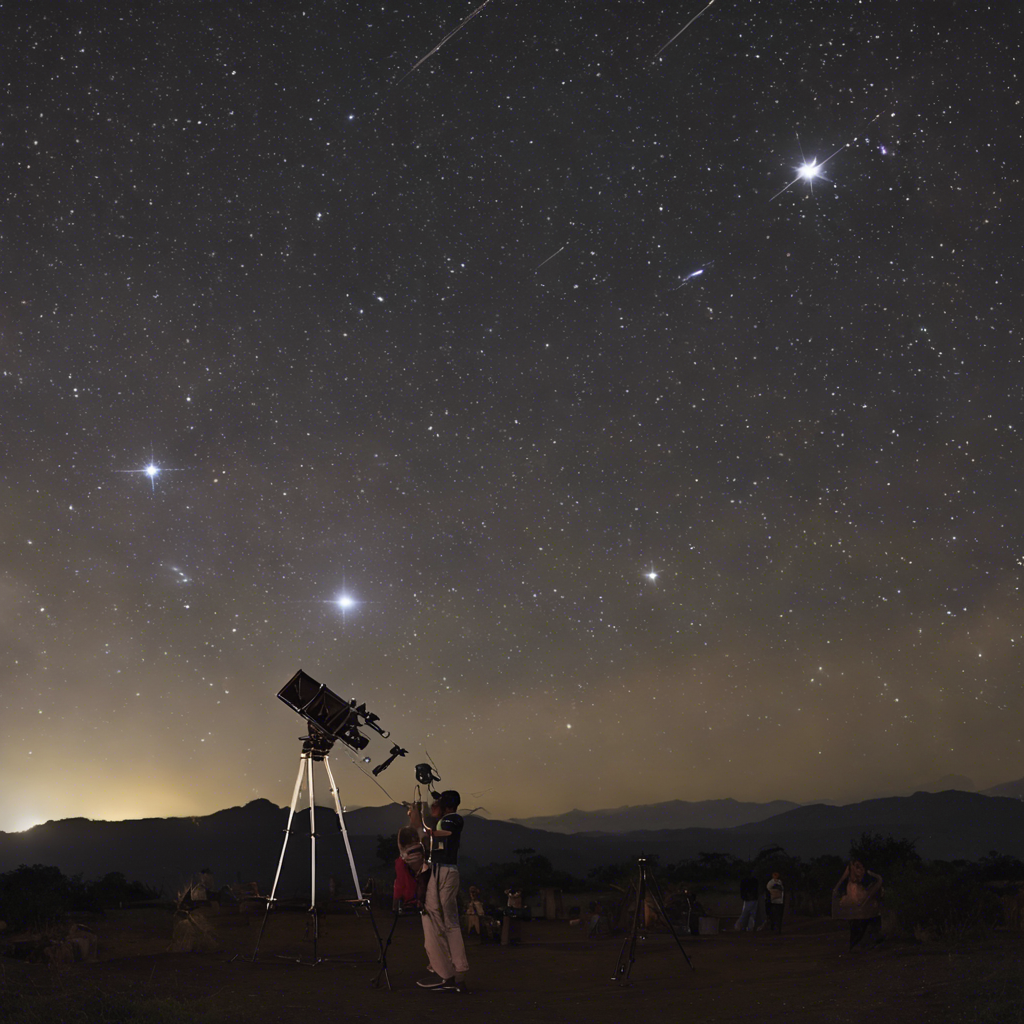
The Atacama Desert, with its stunning landscapes and clear night skies, is an idyllic destination for couples seeking adventure and romance. Here’s a deeper exploration of the ten best activities that couples can enjoy together in this unique desert paradise.
1. Stargazing Tours
Experience the Wonders of the Universe
The Atacama Desert is renowned for its crystal-clear skies, making it one of the best places in the world for stargazing. Couples can join guided tours that provide telescopes and expert commentary on celestial phenomena. Imagine cuddling under a blanket as you gaze at the Milky Way, planets, and distant galaxies. Many tours also include storytelling about constellations and their significance in various cultures, adding a romantic touch to your night.
2. Visit Valle de la Luna (Moon Valley)
Explore Surreal Landscapes
Valle de la Luna is a must-visit for couples. Just a short drive from San Pedro de Atacama, this valley features breathtaking rock formations and sand dunes that resemble the lunar surface. The best way to experience this magical place is through a sunset tour, where you can witness the landscape transform as the sun sets, painting the sky with vibrant colors. For an unforgettable experience, consider taking a hot air balloon ride at dawn to see the valley from above.
3. Romantic Dinners Under the Stars
Candlelit Dining in a Unique Setting
After a day of adventure, treat yourselves to a romantic dinner at one of San Pedro’s charming restaurants. Adobe and Café de la Plaza offer delightful local cuisine paired with stunning views of the desert landscape. Opt for outdoor seating where you can enjoy the cool evening air and perhaps even catch a glimpse of shooting stars as you savor your meal.
4. Relax in Natural Hot Springs
Unwind Together After a Day of Exploration
The Termas de Puritama, located about 30 kilometers from San Pedro, offers natural hot springs surrounded by stunning scenery. Soaking in these warm waters while enjoying the beautiful desert landscape is an excellent way to relax and reconnect after a day filled with activities. Many hot springs facilities also provide amenities such as massages and spa treatments for an extra touch of luxury.
5. Explore the Atacama Salt Flat
Witness Unique Biodiversity
The Salar de Atacama, Chile’s largest salt flat, is home to unique wildlife, including flamingos that thrive in its saline waters. Visiting during sunrise or sunset provides breathtaking views as the landscape glows with vibrant colors. Couples can take leisurely walks along the salt flats or enjoy birdwatching while capturing stunning photographs of each other against this otherworldly backdrop.
6. Experience El Tatio Geysers
A Morning Adventure Like No Other
Rise early to visit El Tatio Geysers, one of the highest geyser fields in the world. The sight of steam rising from geysers against snow-capped mountains at dawn is truly magical. Many tours include breakfast amidst this natural wonder, allowing couples to enjoy a unique dining experience surrounded by breathtaking scenery.
7. Sandboarding Adventures
Thrill-Seeking Fun on Dunes
For adventurous couples, sandboarding on the dunes near San Pedro offers an exhilarating way to spend an afternoon together. Whether you’re seasoned pros or trying it for the first time, racing down sandy slopes will bring out your playful sides and create lasting memories filled with laughter.
8. Visit Rainbow Valley
A Colorful Escape into Nature
True to its name, Rainbow Valley showcases stunning rock formations in various hues—perfect for couples who appreciate nature’s artistry. Spend time hiking through this vibrant area while capturing beautiful moments together against a backdrop of colorful cliffs.
9. Cultural Experiences
Connect with Local Traditions and History
Participate in workshops that showcase local crafts or traditional cooking classes together. Engaging with local culture adds depth to your travel experience and provides opportunities for meaningful interactions with residents, enriching your understanding of this beautiful region.
10. Nightlife in San Pedro de Atacama
Dance and Enjoy Local Vibes Together
After a day filled with adventures, enjoy the lively nightlife in San Pedro. Head to bars like La Casona, where you can enjoy live music and dance under the stars—a perfect way to cap off your romantic day while soaking up local culture.
The Atacama Desert offers couples an array of activities that blend adventure with romance. From stargazing under some of the clearest skies on Earth to exploring unique landscapes and indulging in local cuisine, every moment spent here can strengthen your bond and create lasting memories. Whether you’re seeking thrills or tranquility, this desert paradise has something special for every couple looking to escape into nature’s embrace and celebrate their love together.
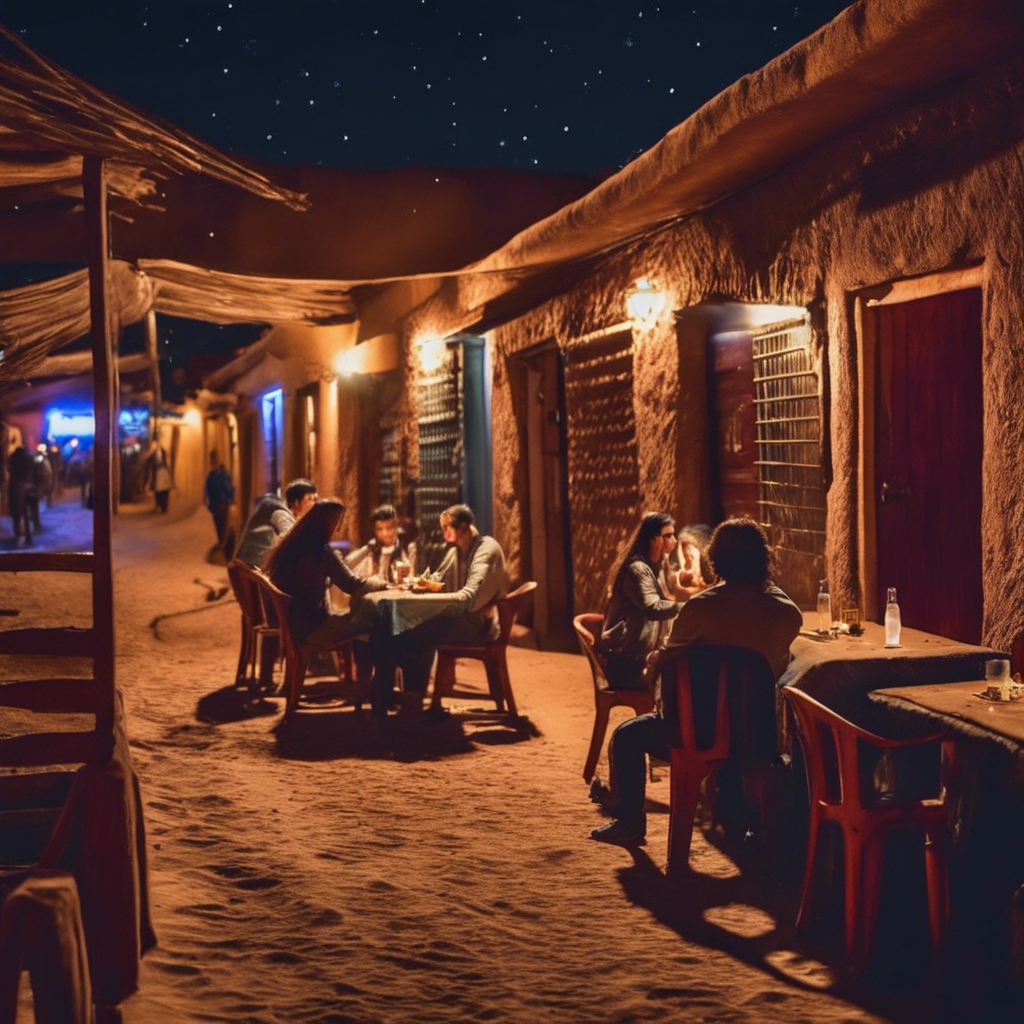
Trending Best Places to Visit:
The Atacama Desert is not only the driest desert in the world but also one of the most stunning landscapes on the planet. With its unique geological formations, vibrant wildlife, and unparalleled stargazing opportunities, it has become a must-visit destination for travelers seeking adventure and beauty. Here’s a closer look at some of the trending places to explore in this remarkable region.
1. Valle de la Luna (Moon Valley)
A Lunar Landscape
Valle de la Luna is perhaps the most iconic attraction in the Atacama Desert. Its surreal rock formations and vast sand dunes create a landscape reminiscent of the moon’s surface. Visitors can explore various trails and viewpoints, with Mirador Piedra del Coyote being particularly famous for sunset views. The valley is part of the Los Flamencos National Reserve, making it a perfect spot for both hiking and photography.
2. El Tatio Geysers
Nature’s Geothermal Show
Located about 4,300 meters above sea level, El Tatio is one of the largest geyser fields in the world. The best time to visit is at dawn when steam rises dramatically against the backdrop of snow-capped mountains. Guided tours often include breakfast amidst this geothermal wonder, making it a unique experience for couples and families alike.
3. Salar de Atacama
A Salt Flat Wonderland
The Salar de Atacama is Chile’s largest salt flat and home to a variety of wildlife, including flamingos. Visiting at sunrise or sunset provides breathtaking views as the landscape transforms into a canvas of vibrant colors. The salt flats are also a great spot for photography enthusiasts looking to capture stunning natural beauty.
4. Lagunas Altiplánicas
Serene Highland Lagoons
Comprising two stunning lagoons—Miscanti and Miñiques—these high-altitude lakes are surrounded by rugged mountains and offer peaceful settings for picnics or leisurely walks. The dramatic scenery makes it an ideal spot for couples seeking tranquility away from the bustling tourist areas.
5. Piedras Rojas (Red Rocks)
Striking Natural Formations
Piedras Rojas features striking red rock formations set against blue lagoons and white salt flats. This area is perfect for hiking and exploring unique geological features while enjoying panoramic views of the surrounding landscape. It’s an excellent choice for those looking to escape the more crowded attractions.
6. Rainbow Valley
A Chromatic Delight
True to its name, Rainbow Valley showcases a stunning array of colors in its rock formations due to various minerals present in the soil. This lesser-visited gem offers a peaceful atmosphere perfect for photography and exploration away from the more popular tourist spots.
7. Puritama Hot Springs
Relaxation Amidst Nature
Located about 30 kilometers from San Pedro, Puritama Hot Springs consists of several geothermal pools nestled in a scenic canyon. Soaking in these warm waters while surrounded by nature is an excellent way to unwind after a day of adventure.
8. Laguna Tebinquinche
A Stunning Lagoon Experience
Laguna Tebinquinche is known for its striking blue waters set against a backdrop of dramatic mountains and salt flats. It’s an ideal location for sunset viewing, where you can witness breathtaking reflections on the water’s surface, making it a romantic spot for couples.
9. Ojos del Salar
Unique Natural Pools
These two small lagoons, resembling eyes, are located near Laguna Tebinquinche and offer a refreshing stop during your explorations. The clear waters provide opportunities for swimming or simply relaxing by the shore while enjoying the tranquil surroundings.
10. San Pedro de Atacama
The Gateway to Adventure
This charming town serves as the main hub for exploring the Atacama Desert. With its adobe buildings, vibrant markets, and lively atmosphere, San Pedro offers plenty of dining options, shops, and cultural experiences. It’s also where many tours depart from, making it an essential stop during your visit.
The Atacama Desert is filled with breathtaking landscapes and unique experiences that cater to all types of travelers—from adventure seekers to those looking for relaxation or romance. Whether you’re exploring otherworldly valleys or soaking in natural hot springs, each destination offers something special that will leave you with lasting memories of this extraordinary region.
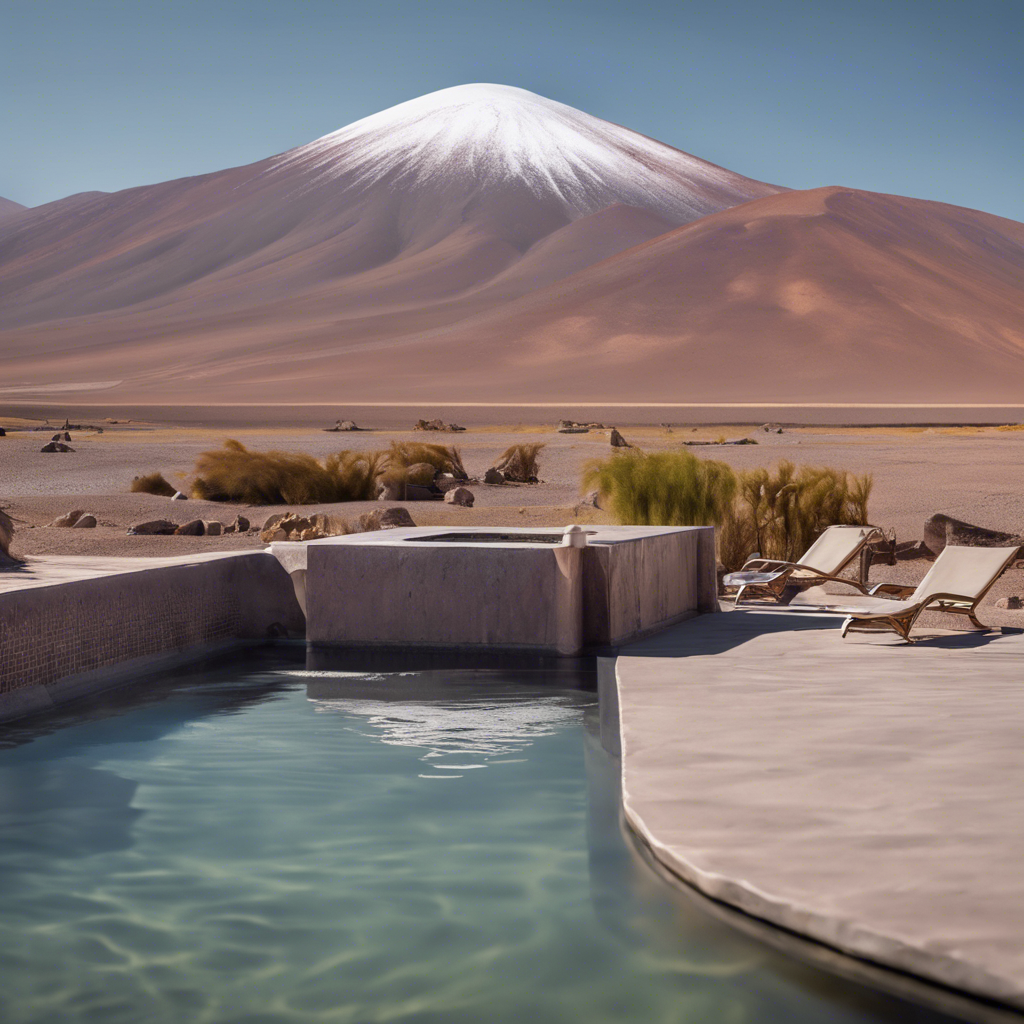
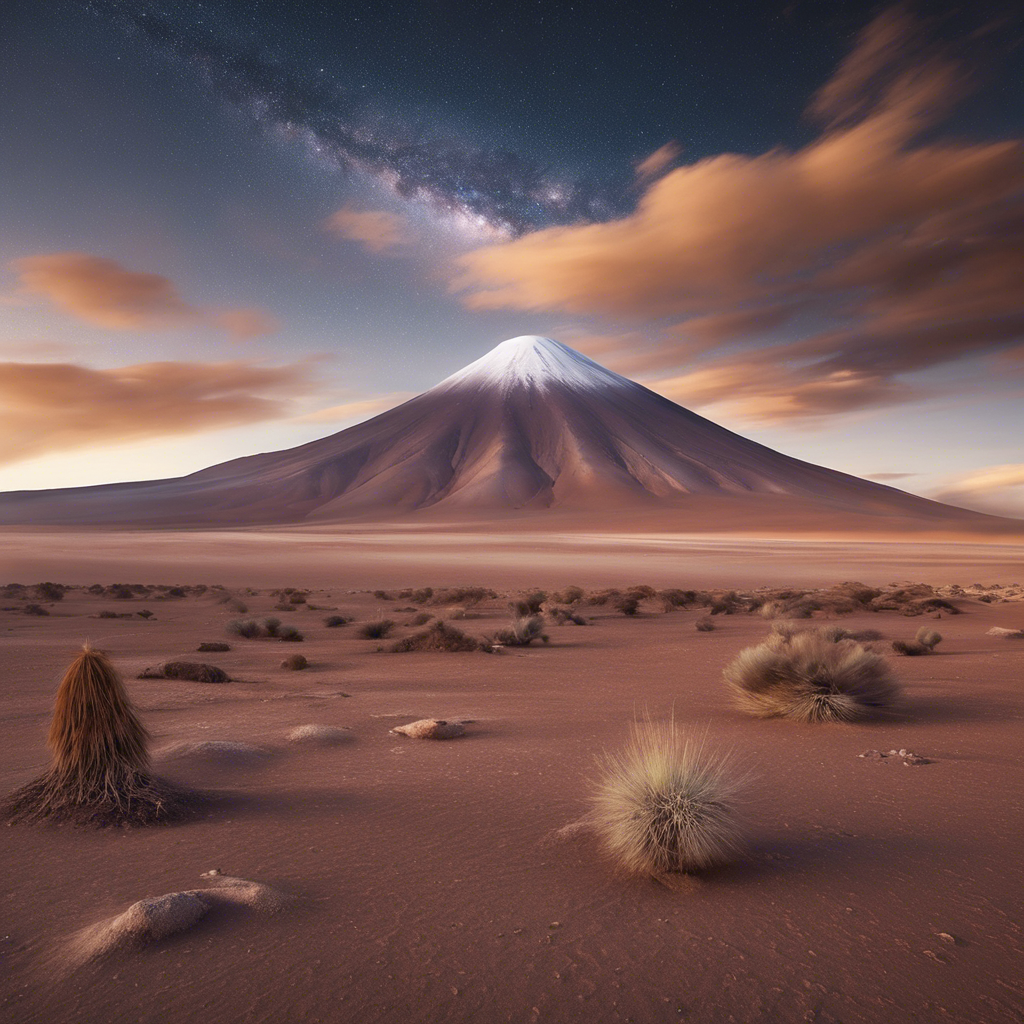
Top Restaurants and Cuisine:
The Atacama Desert may be known for its stunning landscapes and starry nights, but it also boasts a vibrant culinary scene that reflects the rich cultural heritage of the region. From traditional Chilean dishes to innovative fusion cuisine, here’s a deep dive into the top restaurants and must-try dishes that will tantalize your taste buds during your visit.
1. Adobe
Located in the heart of San Pedro de Atacama, Adobe is a favorite among both locals and tourists. This restaurant offers a cozy atmosphere with an inviting fire pit and often features live Andean music.
Cuisine: A mix of Chilean and international dishes.
Must-Try: The steak a la pobre, which comes topped with a fried egg, onions, and fries, is a crowd-pleaser. Don’t miss their rica rica pisco sour for a refreshing twist.
Rating: 4.4/5 from over 3,000 reviews..
2. Las Delicias de Carmen
This charming eatery is renowned for its generous portions and homey atmosphere. Owned by Carmen Aguayo, it specializes in traditional Chilean fare.
Cuisine: Traditional Chilean dishes with a focus on hearty soups and stews.
Must-Try: The patasca, a delicious beef stew made with white corn and potatoes, is highly recommended.
Rating: 4.4/5 from over 1,000 reviews.
3. Pulpería Atacama
A unique blend of exquisite cuisine and live music, Pulpería Atacama offers an artistic dining experience.
Cuisine: A fusion of local ingredients with creative presentations.
Must-Try: Their specialty dishes often include fresh seafood and traditional meats.
Rating: 4.6/5 from 167 reviews.
4. Baltinache Restaurant
Known for its innovative take on local ingredients, Baltinache offers a contemporary dining experience.
Cuisine: Fusion of indigenous flavors with modern techniques.
Must-Try: The tasting menu showcases seasonal ingredients in unique combinations.
Rating: 4.5/5 from over 300 reviews.
5. Mal de Puna
This restaurant is popular for its laid-back vibe and hearty meals.
Cuisine: Casual dining with hearty portions.
Must-Try: Their empanadas are particularly famous among visitors.
Rating: 4.3/5 from over 1,600 reviews.
6. Rincón de Sal
A hidden gem known for its seafood offerings and warm atmosphere.
Cuisine: Specializes in fresh seafood dishes along with traditional Chilean fare.
Must-Try: The ceviche is a standout dish that captures the essence of coastal flavors.
Rating: 4.6/5 from 180 reviews.
7. Ckunna
Famed for its unique ambiance and artistic decor, Ckunna serves up delicious meals with local flair.
Cuisine: A blend of traditional and contemporary Chilean dishes.
Must-Try: Their quinoa salad is refreshing and packed with flavor.
Rating: 4.5/5 from over 500 reviews.
8. Lola San Pedro
A vibrant spot that combines dining with nightlife, Lola is perfect for those looking to relax after a day of exploration.
Cuisine: Bar food with creative cocktails and light meals.
Must-Try: Their signature cocktails are known to be fantastic after a long day under the sun.
9. Agua Loca
Located at the start of Caracoles street, Agua Loca offers a warm atmosphere with innovative dishes.
Cuisine: New gastronomic proposals using local products.
Must-Try: Their seasonal specialties often highlight fresh produce from the region.
10. La Casona
This traditional restaurant features both local chefs and international flavors, making it a bustling spot for food lovers.
Cuisine: A mix of classic Chilean dishes like chupes (meat pies) and pastel de choclo (corn pie).
Must-Try: The pastel de choclo is particularly popular among diners looking for comfort food.
Culinary Highlights
In addition to these top restaurants, there are several culinary experiences you shouldn’t miss:
Ice Cream at Babalu Heladeria
Known for its inventive flavors using local ingredients like rica rica and quinoa, this ice cream shop is perfect for cooling off after exploring the desert heat.
Cafés like Roots Cafe
Offering excellent coffee and breakfast options, it’s a great spot to fuel up before your adventures.
Pastry Shops
Don’t forget to stop by local pastry shops for treats like alfajores or pastries filled with dulce de leche—perfect for those with a sweet tooth!
The culinary scene in the Atacama Desert is as diverse as its landscapes. From hearty traditional dishes to innovative modern cuisine, there’s something to satisfy every palate. Whether you’re dining under the stars or enjoying a casual meal in town, each restaurant offers a unique glimpse into the rich flavors of Chile’s high desert region. So come hungry—your taste buds are in for an adventure!
Top 15 Things for Families to Do in Stargazing in the Atacama Desert"
Family-Friendly Stargazing Tours: Many companies offer tours suitable for all ages with engaging explanations.
Visit Local Museums: Learn about indigenous cultures and astronomy at museums in San Pedro.
Explore Valle de la Luna: Family-friendly trails make this an accessible adventure.
Sandboarding Lessons: Safe lessons available for kids and adults alike.
Wildlife Watching: Spot flamingos at salt flats or vicuñas on high-altitude excursions.
Geyser Tours: Early morning trips to Tatio Geysers are thrilling for all ages.
Camping Adventures: Family camping under the stars offers bonding moments away from city lights.
Horseback Riding: Explore scenic trails on horseback—great fun for kids!
Cooking Classes: Engage in local cuisine by taking family cooking classes together.
Visit Altiplanic Lagoons: A picturesque day trip suitable for families.
Cultural Workshops: Participate in artisan workshops that welcome family involvement.
Biking Tours: Rent bikes to explore nearby attractions at your own pace.
Nature Hikes: Kid-friendly hikes through beautiful landscapes are plentiful.
Visit Pukará de Quitor: Explore ancient ruins that spark curiosity about history.
Astronomy Nights: Special family-oriented astronomy nights with storytelling about constellations.
Transportation Tips:
Traveling to and around the Atacama Desert can be an adventure in itself. With its stunning landscapes and unique attractions, it’s essential to understand your transportation options to make the most of your visit. Here’s a comprehensive guide to help you navigate your journey effectively.
Getting to the Atacama Desert
By Air
Fly to Calama: The nearest airport is in Calama, approximately 100 kilometers from San Pedro de Atacama. Flights from Santiago are frequent and usually affordable, making this the fastest option. Once you land, you can take a bus or a shuttle to San Pedro, which takes about two hours.
By Bus
Long-Distance Buses: If you’re traveling from Santiago, expect a lengthy bus ride of 20-24 hours. Companies like TurBus and Pullman offer comfortable overnight buses with reclining seats, meals, and refreshments. Prices start around $35 USD.
Local Connections: Once in Calama, you can catch a bus to San Pedro for about $5 USD, taking around 1.5 hours.
Driving
Rent a Car: Renting a car gives you the freedom to explore at your own pace. Daily rates start at around 23,000 Chilean pesos (approximately $30 USD). Ensure you have GPS or a map, as some roads can be challenging.
Road Conditions: Most roads are well-maintained, but be cautious on gravel roads leading to attractions like Lagunas Escondidas.
Getting Around San Pedro de Atacama
Walking
Compact Town: San Pedro is small and walkable, making it easy to explore on foot. Many restaurants, shops, and tour operators are within walking distance.
Biking
Bike Rentals: Renting a bike is a popular way to visit nearby attractions like Valle de la Luna and Laguna Cejar. Rentals typically cost around 6,000 CLP for six hours. This option allows for a more intimate experience with the landscape.
Tours
Guided Tours: Many attractions are best accessed through guided tours that include transportation. This is especially useful for remote sites like geysers or salt flats where public transport may not be available.
Local Transport
Shuttles and Taxis: For short distances within San Pedro or to nearby sites not covered by tours, taxis and shuttles are available. Prices can vary, so it’s wise to negotiate before starting your journey.
Tips for Navigating the Desert:
Plan Your Routes: Before heading out, plan your routes carefully, especially if you’re driving or biking. Some areas may have limited access or require entrance fees.
Stay Hydrated: The desert climate can be dehydrating; always carry water with you.
Timing Matters: Many attractions are best visited early in the morning or late in the afternoon due to temperature extremes and lighting conditions for photography.
Safety First: Always inform someone of your plans if venturing into remote areas alone, and consider traveling with others for safety.
With its breathtaking landscapes and unique experiences, exploring the Atacama Desert is sure to be an unforgettable adventure. Whether you choose to fly in for convenience or take the scenic route by bus, understanding your transportation options will help you make the most of your visit. Embrace the journey—after all, every great adventure begins with getting there!
About Wildlife:
The Atacama Desert, often considered the driest desert on Earth, presents a unique challenge for wildlife. Despite its harsh conditions, a variety of animals have adapted to thrive in this arid environment. This section delves deeper into the fascinating wildlife of the Atacama, highlighting key species across various categories and their remarkable adaptations.
Mammals
Guanaco
Description: The guanaco is a large camelid, closely related to llamas, standing up to 1.9 meters tall and weighing around 150 kilograms. They have a distinctive gray face and a coat that ranges from light brown to dark red.
Habitat: Guanacos are typically found in areas with some vegetation, especially where melted snow provides moisture.
Adaptation: They can survive longer without water compared to other camelids, making them well-suited for the arid conditions of the Atacama. Their ability to graze on sparse vegetation allows them to thrive even in dry spells.
Vicuña
Description: Smaller than guanacos, vicuñas weigh up to 65 kilograms and are known for their fine wool, which is highly prized.
Habitat: They inhabit high-altitude areas (3,200 to 4,800 meters), often grazing on the plains during the day and retreating to higher slopes at night.
Special Adaptation: Vicuñas can drink highly saline water from salt lakes and have been known to lick rocks for essential minerals.
Southern Viscacha
Description: This rodent resembles a large rabbit and is known for its long ears and fluffy tail.
Habitat: Viscachas are typically found in rocky areas where they can hide from predators.
Behavior: They are primarily diurnal, emerging during the day to feed on grasses and lichen.
Culpeo Fox
Description: The Culpeo fox is the largest predator in the Atacama and an opportunistic hunter, preying on small mammals like viscachas and birds.
Diet: Their diet includes lizards, rodents, and even plant matter when food is scarce.
Adaptation: Their adaptability allows them to thrive in various habitats within the desert.
Darwin’s Leaf-Eared Mouse
Description: A small rodent with large ears that help dissipate heat.
Diet: It feeds on seeds, grass, and insects, extracting moisture from its food.
Habitat: Found in sparse vegetation areas; it has adapted well to extreme conditions.
Birds
Andean Flamingo
Description: One of three flamingo species found in the Atacama, distinguished by its pink feathers and black-tipped wings.
Habitat: Commonly seen at salt flats like Salar de Atacama where they feed on algae.
Behavior: They are social birds that often gather in large flocks.
Chilean Flamingo
Description: Similar to the Andean flamingo but lacks black wing tips; it has a more uniform pink coloration.
Habitat: Often found in coastal lagoons and salt flats throughout the region.
Diet: Primarily feeds on algae and small crustaceans.
James Flamingo
Description: The smallest flamingo species with distinctive yellow and black beaks.
Habitat: Typically seen during winter months at higher altitudes.
Conservation Status: Vulnerable due to habitat loss.
Humboldt Penguin
Description: A flightless bird that thrives along the coast; known for its excellent swimming abilities.
Habitat: Nests along cliffs overlooking the ocean; important breeding colonies exist in coastal areas of Chile.
Diet: Feeds on fish and other marine life.
Giant Hummingbird
Description: The largest hummingbird species weighing about 0.8 ounces; it has muted colors compared to other hummingbirds.
Habitat: Prefers nectar-rich flowers found in various habitats across the desert.
Behavior: Known for its unique hovering flight style.
Reptiles and Amphibians
The Atacama Desert has limited reptile diversity due to its extreme dryness:
Iguanas and Lava Lizards inhabit parts of the desert, often found basking on rocks or hiding among vegetation.
The Vallenar Toad, which lives in moist microhabitats called “lomas,” lays eggs in permanent ponds or streams.
Insects and Arachnids
While many parts of the Atacama are too dry for insect life:
Sand-colored grasshoppers blend into their surroundings, providing camouflage against predators.
Beetles play an essential role in the ecosystem by breaking down organic matter in more hospitable areas like lomas.
Red scorpions inhabit parts of the desert; their coloration helps them evade detection by predators like gray foxes.
Conservation Challenges
Wildlife in the Atacama faces significant challenges:
Climate Change: Changes in weather patterns can affect water availability, impacting both flora and fauna.
Human Activity: Mining operations and tourism can disrupt habitats; responsible tourism practices are vital for conservation efforts.
Conclusion
The wildlife of the Atacama Desert showcases nature’s remarkable adaptability. From majestic flamingos to elusive foxes, each species plays a crucial role in this fragile ecosystem. Understanding and appreciating this wildlife not only enhances your experience but also underscores the importance of conservation efforts in preserving these remarkable creatures for future generations.
Travel Tips for Stargazing in the Atacama Desert:
The Atacama Desert is renowned for its breathtaking night skies, making it a prime destination for stargazing enthusiasts. To ensure you have the best experience possible, here are some essential travel tips to consider when planning your stargazing adventure in this unique environment.
1. Timing Your Visit
Best Months: The ideal time for stargazing in the Atacama is during the dry season, which runs from May to October. Clear skies and minimal humidity enhance visibility.
Moon Phases: For optimal stargazing, plan your visit around new moons when the sky is darkest. Check lunar calendars to avoid full moon dates.
2. Choosing the Right Location
San Pedro de Atacama: This town serves as the main base for stargazing tours and activities. Its proximity to major attractions makes it convenient.
Remote Areas: Consider heading to locations like Valle de la Luna or the Salar de Atacama for less light pollution and stunning backdrops.
3. Guided Stargazing Tours
Local Expertise: Joining a guided tour can enhance your experience significantly. Local guides provide telescopes and share insights about constellations, planets, and the universe.
Booking in Advance: Popular tours fill up quickly, especially during peak season. Book your stargazing tour ahead of time to secure a spot.
4. What to Bring
Warm Clothing: Temperatures can drop significantly at night, even in summer. Layer up with a warm jacket, hat, gloves, and comfortable shoes.
Blankets or Sleeping Bags: Bring something to sit or lie on while you gaze at the stars. It adds comfort during long periods of stargazing.
Binoculars or Telescopes: If you have your own equipment, bring it along! Binoculars can enhance your viewing experience.
5. Photography Tips
Camera Gear: If you plan to capture the night sky, bring a DSLR or mirrorless camera with manual settings capability. A tripod is essential for long exposure shots.
Settings: Use a wide aperture (f/2.8 or lower), a high ISO (1600-3200), and longer exposure times (15-30 seconds) to capture stunning images of the Milky Way.
6. Health Precautions
Altitude Sickness: San Pedro de Atacama is located at over 2,400 meters (7,874 feet) above sea level. Drink plenty of water and consider acclimatizing by spending a day or two before engaging in strenuous activities.
Stay Hydrated: The desert climate can be dehydrating. Carry water with you at all times.
7. Transportation Tips
Renting a Car: Renting a vehicle provides flexibility to explore remote areas at your own pace. Ensure you have GPS or offline maps as cell service may be limited.
Public Transport: Buses connect San Pedro with nearby attractions but may not run frequently. Plan your itinerary accordingly.
Biking: Renting bikes can be an enjoyable way to explore nearby sites during the day before heading out for nighttime stargazing.
8. Respecting Nature
Leave No Trace: Follow principles of responsible tourism by not disturbing wildlife or leaving trash behind.
Quiet Enjoyment: Keep noise levels down while stargazing to respect other visitors and local wildlife.
9. Local Culture and Etiquette
Engage with Locals: Take time to learn about local customs and traditions related to astronomy from indigenous communities, who have rich cultural connections to the stars.
Support Local Businesses: Consider dining at local restaurants and participating in community-led tours that benefit residents.
10. Plan Your Itinerary Wisely
Prioritize Attractions: The Atacama Desert is vast; prioritize key attractions such as Valle de la Luna, El Tatio Geysers, and various lagoons during the day before stargazing at night.
Rest Days: Include downtime in your itinerary to recover from high altitude and enjoy leisurely exploration without feeling rushed.
Conclusion
Stargazing in the Atacama Desert is an unforgettable experience that combines breathtaking views with rich cultural history. By following these travel tips—timing your visit, choosing the right location, preparing adequately, and respecting local customs—you can maximize your enjoyment of this celestial wonderland. Whether you’re an avid astronomer or simply looking for a romantic night under the stars, the Atacama offers an unparalleled adventure that will leave you in awe of the universe’s beauty.


